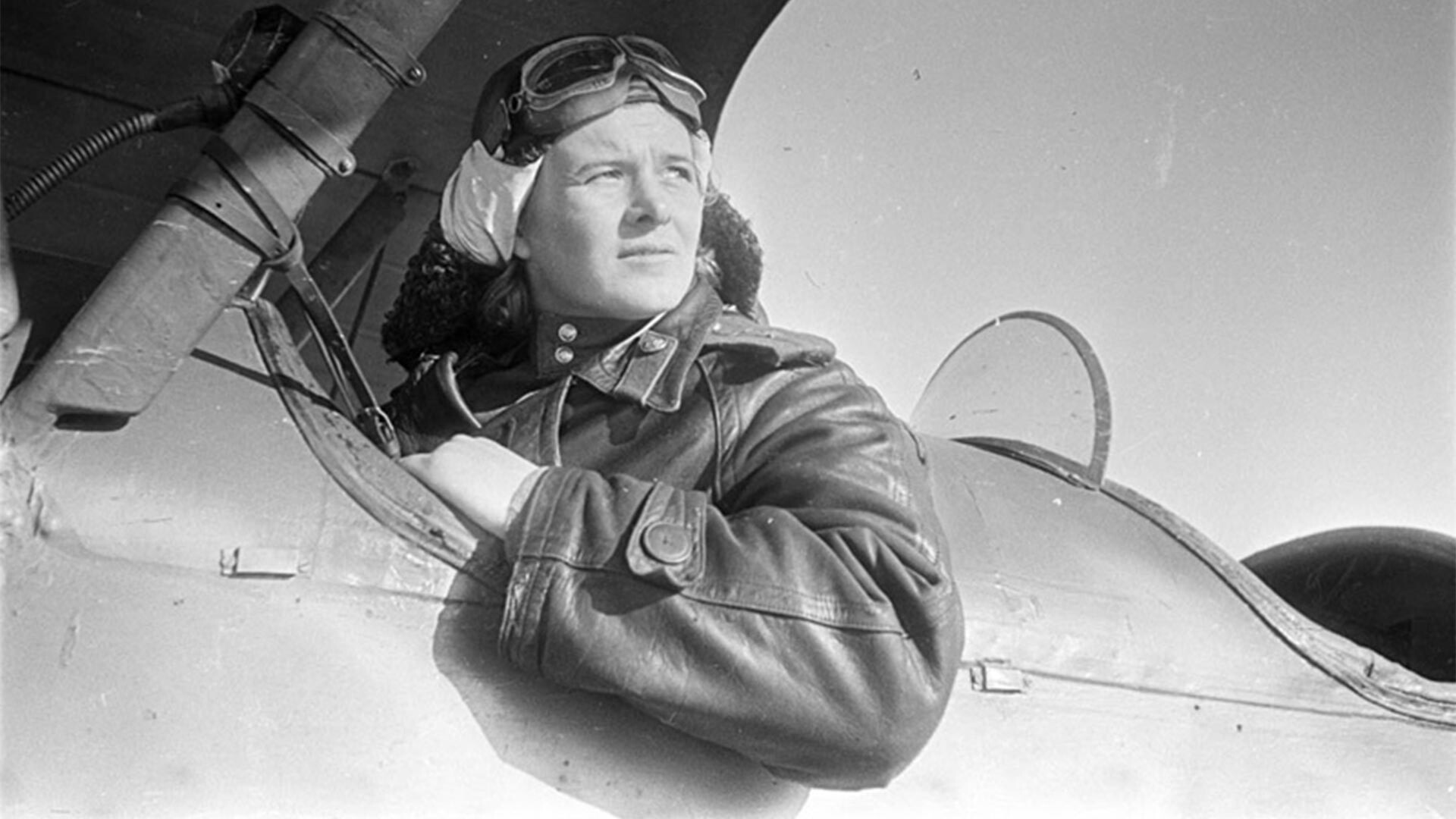
Commander of the the 588th Night Bomber Regiment Yevdokiya Bocharova (Bershanskaya).
Arkady Shaikhet/russiainphoto.ruThe Nazis called them the ‘Night Witches’, but, to Soviet airmen, they were ‘Little Sisters’, ‘Heavenly Creatures’ or ‘Swallows’. The airwomen of the 588th Night Bomber Regiment flew not fast and powerful aircraft, but low-speed biplanes, which, at times, posed no less danger to the enemy.
From the very first day of its formation to Victory Day, Yevdokiya Bocharova (Bershanskaya) stood at the helm of this unique military formation.
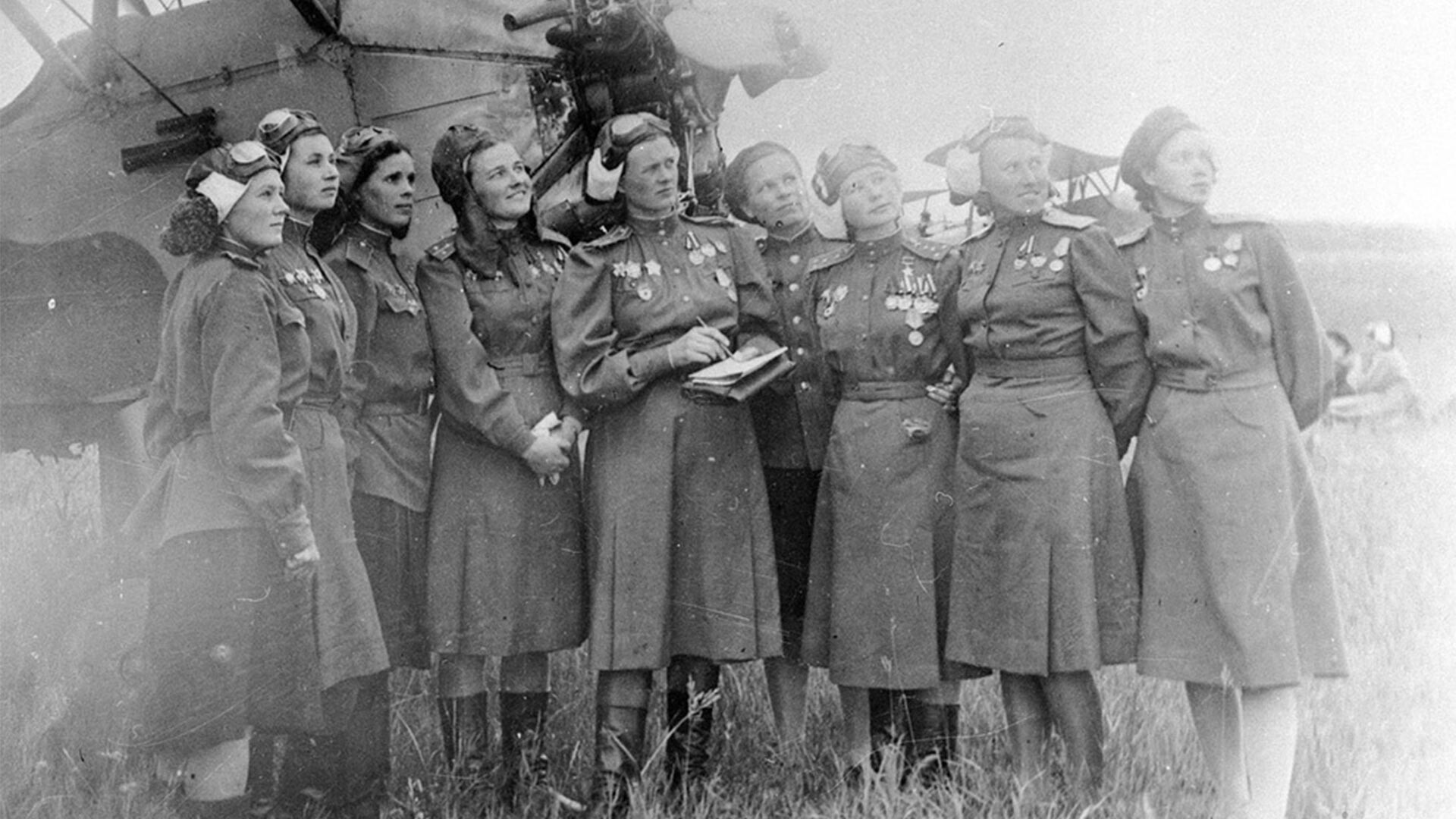
The airwomen of the 588th Night Bomber Regiment.
Evgeny Khaldey/МАММ/МDF/russiainphoto.ruThe 588th wasn’t the only female aviation regiment in the Red Army Air Force. The 587th Bomber Regiment, which used Pe-2 bombers and the 586th Fighter Aviation Regiment were also formed in October 1941. But, the ‘Night Witches’ were the only regiment in which women performed the full range of functions - from mechanics and technicians to flight navigators and pilots.
The aviation regiment’s main workhorse was the U-2 (Po-2) plane, which had been designed in the 1920s for agricultural use - to spread fertilizer on fields. In wartime, it began to be used as a liaison aircraft, as well as for delivering supplies to partisans and encircled army units and for night bombing.
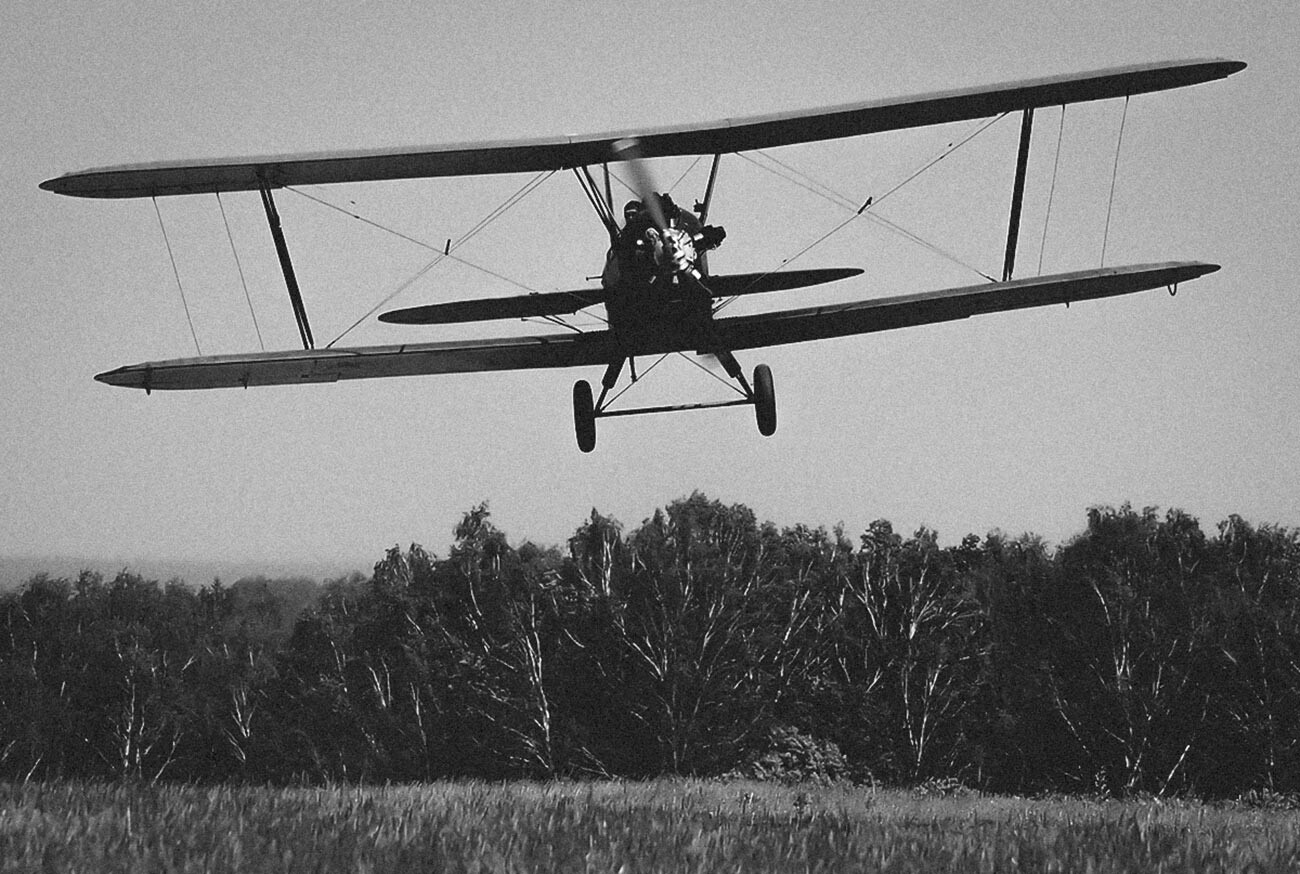
The U-2 (Po-2) plane.
Aleksandr MarkinEasy to operate and cheap to produce, the U-2 could take off from and land on even a small patch of ground. Being a low-speed aircraft, it flew almost at treetop level and, therefore, was an extremely awkward target for the high-speed Messerschmitts.
Of course, such a fragile and sluggardly aircraft could not make sorties during the day. But, at night, the U-2 turned into a formidable weapon. Turning off its engines before nose diving onto its target, it would suddenly emerge from the darkness and hit an enemy military facility or a group of soldiers gathered round a campfire with pinpoint accuracy. The particular sound the aircraft made at that moment reminded the Germans of a sweeping broom - hence the famous nickname.
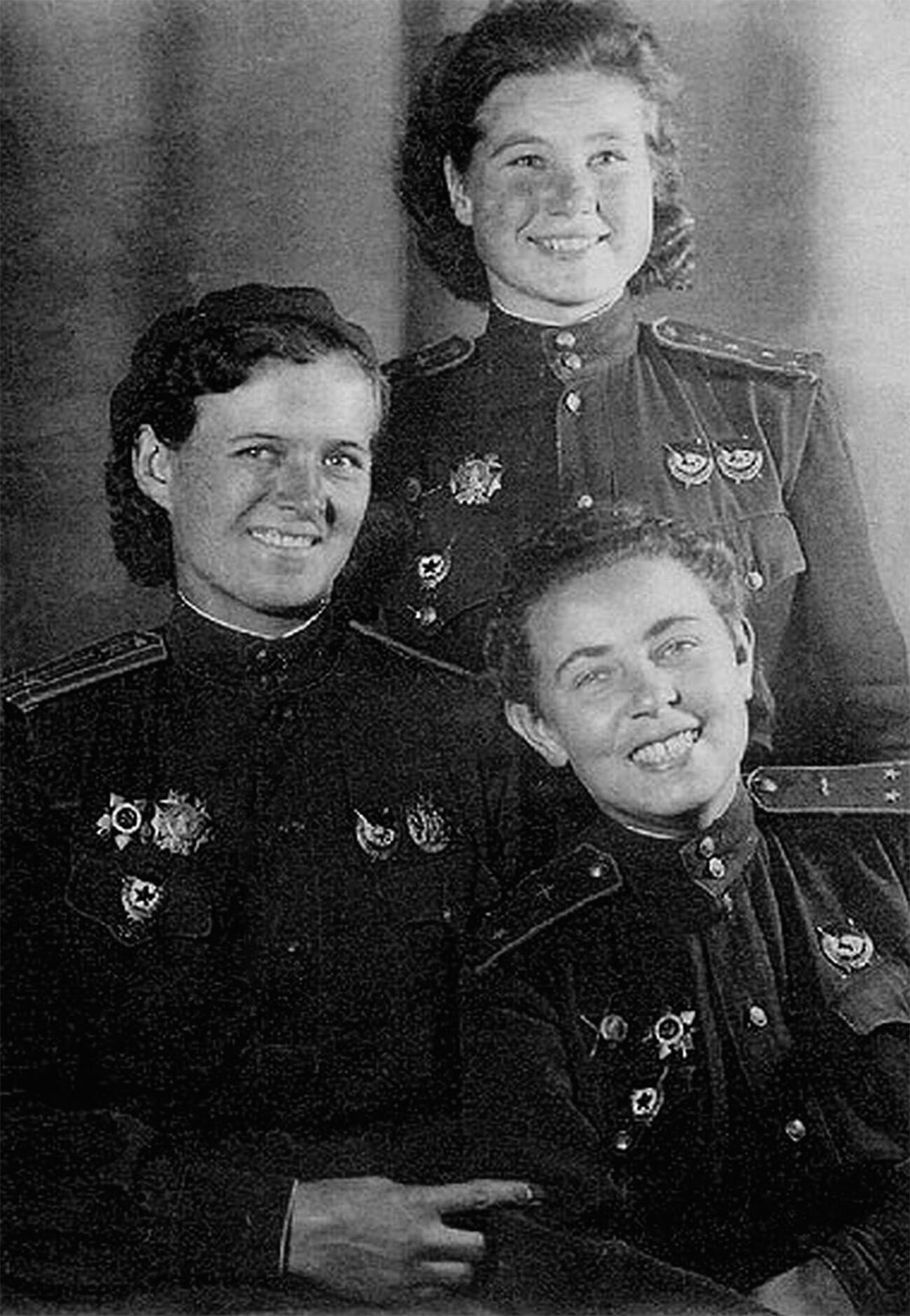
Yevdokiya Bershanskaya (left), Maria Smirnova (standing) and Polina Gelman.
The Ministry of Defense of the Russian FederationYevdokiya Bocharova, who was known by the name of Bershanskaya during the war, was an ideal candidate for regimental commander. She possessed both the necessary strength of character and organizational skills, as well as many years of experience in civil aviation. As a flying instructor, she had trained dozens of pilots before the war.
“Yevdokiya Bershanskaya was a real commander - austere, modest, self-possessed,” recalled airwoman Irina Dryagina. “She never berated or praised anyone without knowing the full facts. But, her firm hand could be felt everywhere, particularly in the organization of combat operations. At the start of missions, she would almost always attend take-off and, if it was necessary and she had permission from the divisional command, she flew sorties herself. As a rule, she would climb up to the crews of planes which were awaiting the signal for take-off to give them the latest instructions. She did this unsmilingly and her tone of voice was dry and her expression severe. But, each one of us could detect her trust and concern and we were ready to take on any assignment, even the most difficult.”
Being an extremely strong-willed and resourceful person, Yevdokiya Davydovna managed, in a short space of time, to forge a strong and tight-knit team, ready to take on combat missions of any difficulty. In wartime conditions, the training of airwomen lasted just six months and Bershanskaya did everything in her power to ensure that the young and inexperienced women gained confidence in their own abilities as rapidly as possible.
Under Yevdokiya Bershanskaya’s command, the 588th Regiment followed an arduous route from Rostov Region to Germany, taking part in the liberation of the North Caucasus, Crimea, Byelorussia and Poland. For the courage and heroism of its personnel, it was made a “Guards” regiment on February 8, 1943, and was reorganized into the 46th Guards Night Bomber Aviation Regiment. “Our joy knew no bounds! It was just eight months since we had first arrived at the front,” Yevdokiya Davydovna recalled.
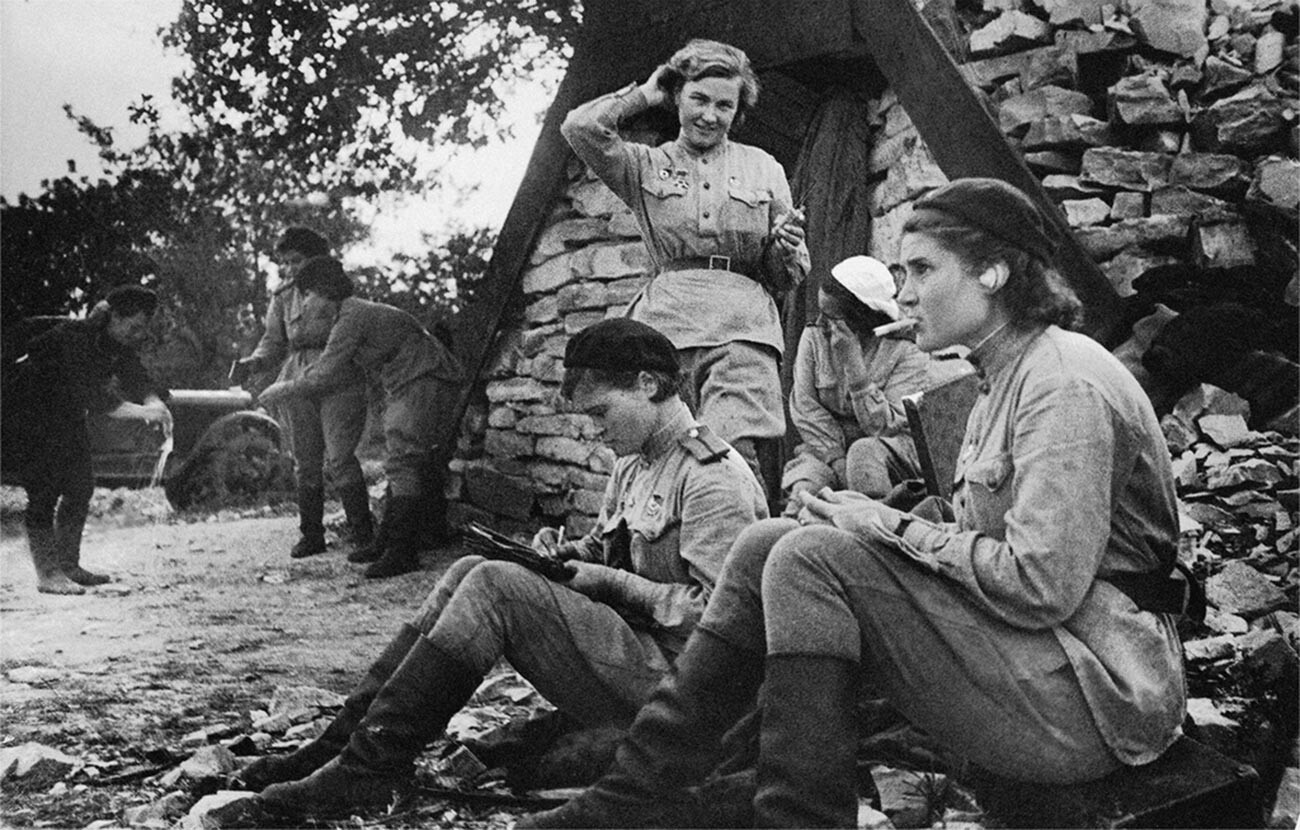
Rare moments of silence.
Evgeny Khaldey/МАММ/МDF/russiainphoto.ruIn the war years, ‘Russian Mosquito Aviation’, as the Germans dubbed Bershanskaya’s regiment, flew almost 24,000 sorties, destroying or damaging 17 river crossings, nine railway trains, two railway stations, 26 depots, 12 fuel storage tanks and 86 enemy firing positions. The regiment’s losses amounted to 32 young women killed in action, in air crashes and from illness. This was a very low toll compared with other units.
Twenty-three airwomen who served under Bershanskaya were made Heroes of the Soviet Union. The commander herself, however, was not decorated with this high honor, although she received many other awards. The reason was that a minimum of 300 operational sorties were needed to qualify for it, while Yevdokiya Davydovna only notched up 28.

Bershanskaya clarifies the combat mission before the flight.
Archive photo“All the same, it was unfair not to put her forward for the Hero title,” complained the regimental chief of staff, Irina Rakobolskaya. “She didn’t fly much herself - only with the permission of the divisional commander when the situation over the target was very difficult. Her personal presence in the air was unimportant: There was no radio on the planes and she could not lead the way for the regiment at night. The most important thing of all was her personal management of flights prior to take-off and her command of combat operations. Surely other commanders were rewarded for the exploits of their units?”
If using any of Russia Beyond's content, partly or in full, always provide an active hyperlink to the original material.
Subscribe
to our newsletter!
Get the week's best stories straight to your inbox